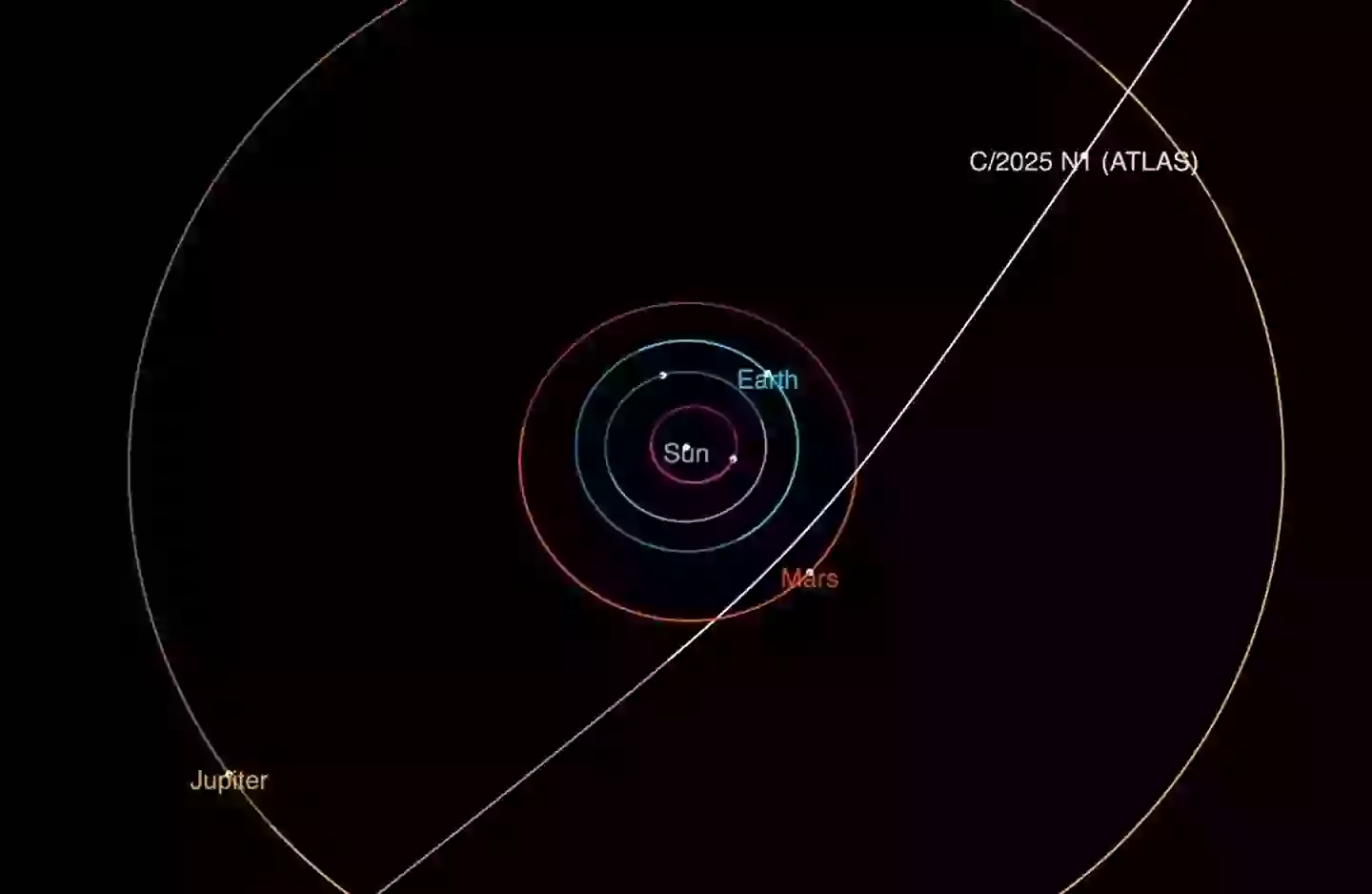Mystery Solved? Scientists Claim Breakthrough in Identifying Enigmatic Interstellar Visitor in Our Solar System
So, guess what just slid into our cosmic neighborhood like an uninvited guest at a party? Meet 3I/ATLAS—the interstellar traveler that called Earth’s backyard home for a hot minute after being spotted on July 1. This isn’t your everyday rock; it’s only the third known visitor from outside our solar system to swing by, and it’s cruisin’ through space at a distance that’s a whopping 150 million miles shy of hitting our turf. Spotted by Chile’s ATLAS telescope, this ancient wanderer might just be the oldest comet we’ve ever laid eyes on—clocking in at around seven billion years old, which frankly makes it a real senior citizen in cosmic terms. But here’s the kicker: scientists aren’t quite sure if it’s a comet or something a bit stranger, thanks to Harvard’s Avi Loeb pondering if this 20-kilometer reflective mystery has more secrets up its sleeve. So as it zips past the sun in late October, all eyes are peeled—because who wouldn’t wanna unravel the tale of this galactic drifter that’s traveled eons just to say hello? LEARN MORE
Scientists have been studying an interstellar object that’s currently moving through our solar system which was first spotted on 1 July.
It has been called 3I/ATLAS because of what spotted it, and this object being the third detected interstellar object in our system.
It’s from outside our own solar system, so this thing has travelled quite a long way to get to our locality, and thanks to our many wonderful telescopes, we’re able to get a good look at it.
Asteroid Terrestrial-impact Last Alert System (ATLAS) in Rio Hurtado, Chile, spotted 3I/ATLAS as part of planet Earth’s early warning system for objects in space which might strike our world.
Fortunately, this thing is going to miss us to the tune of 150 million miles as it moves through our solar system, and NASA says that on 30 October, it will come within 130 million miles of our sun.
For the time being, we’re able to watch the progress made by 3I/ATLAS and will be able to do so until September, at which point it’ll be too close to the sun.

The interstellar object will pass between Earth and Mars as it moves through our Solar System (NASA/JPL-Caltech)
NASA has been calling this thing a comet, but scientists have also been investigating the possibility that it could be something else.
Professor Avi Loeb of Harvard University has written that 3I/ATLAS may be something other than a comet, and said that from observations it appeared to be ‘a reflecting surface that is about 20 kilometres in diameter’.
He said that the closer the interstellar object comes to the sun, the more we will learn about it and its true nature, noting that if it is a comet ‘then it will get brighter as it comes closer to the sun and its surface gets warmer’.
Not only have scientists been looking for signs that the interstellar object is a comet, but they also think 3I/ATLAS is one of the oldest things we’ve ever seen, possibly even older than the solar system it is currently travelling through.
According to Space, a team of astronomers reckon that the interstellar object is roughly seven billion years old.

Scientists are working out whether it’s a comet or not, and they’re sure it’s very, very old (Getty Stock Photo)
Matthew Hopkins of the University of Oxford said that all of the non-interstellar objects we see formed at the time our solar system did about 4.5 billion years ago.
He explained: “But interstellar visitors have the potential to be far older, and of those known about so far, our statistical method suggests that 3I/ATLAS is very likely to be the oldest comet we have ever seen.”
They’ve said it seems likely this object came from the ‘thick disk’ of the Milky Way, which would make it one of the older parts of the galaxy.
This visitor which comes from a long time ago in a part of our galaxy far, far away has got a lot of interest around it.



















